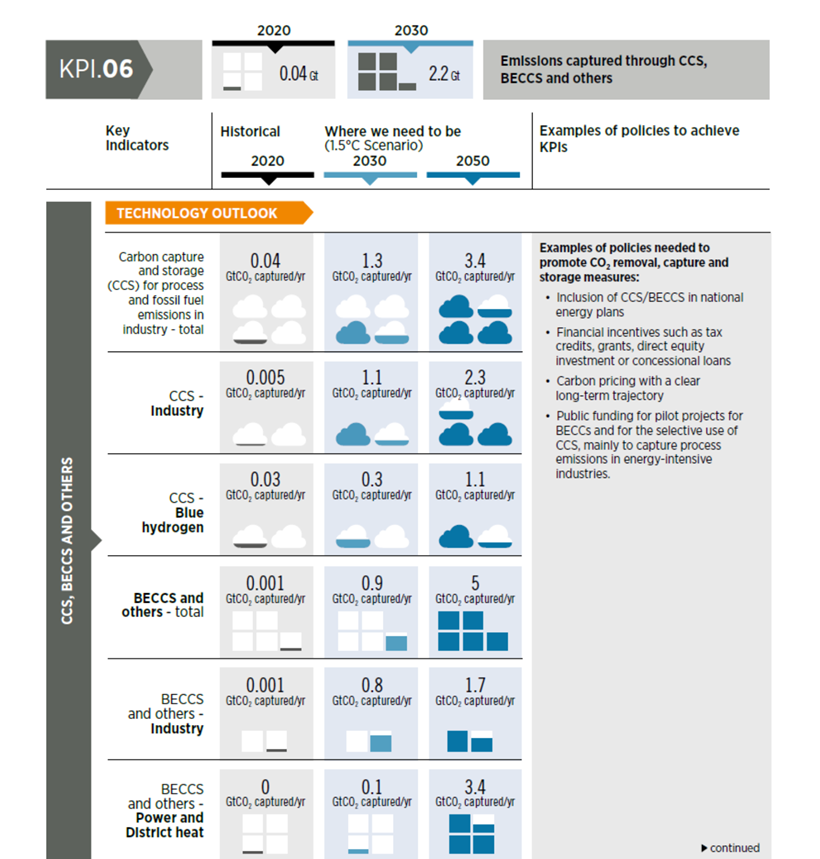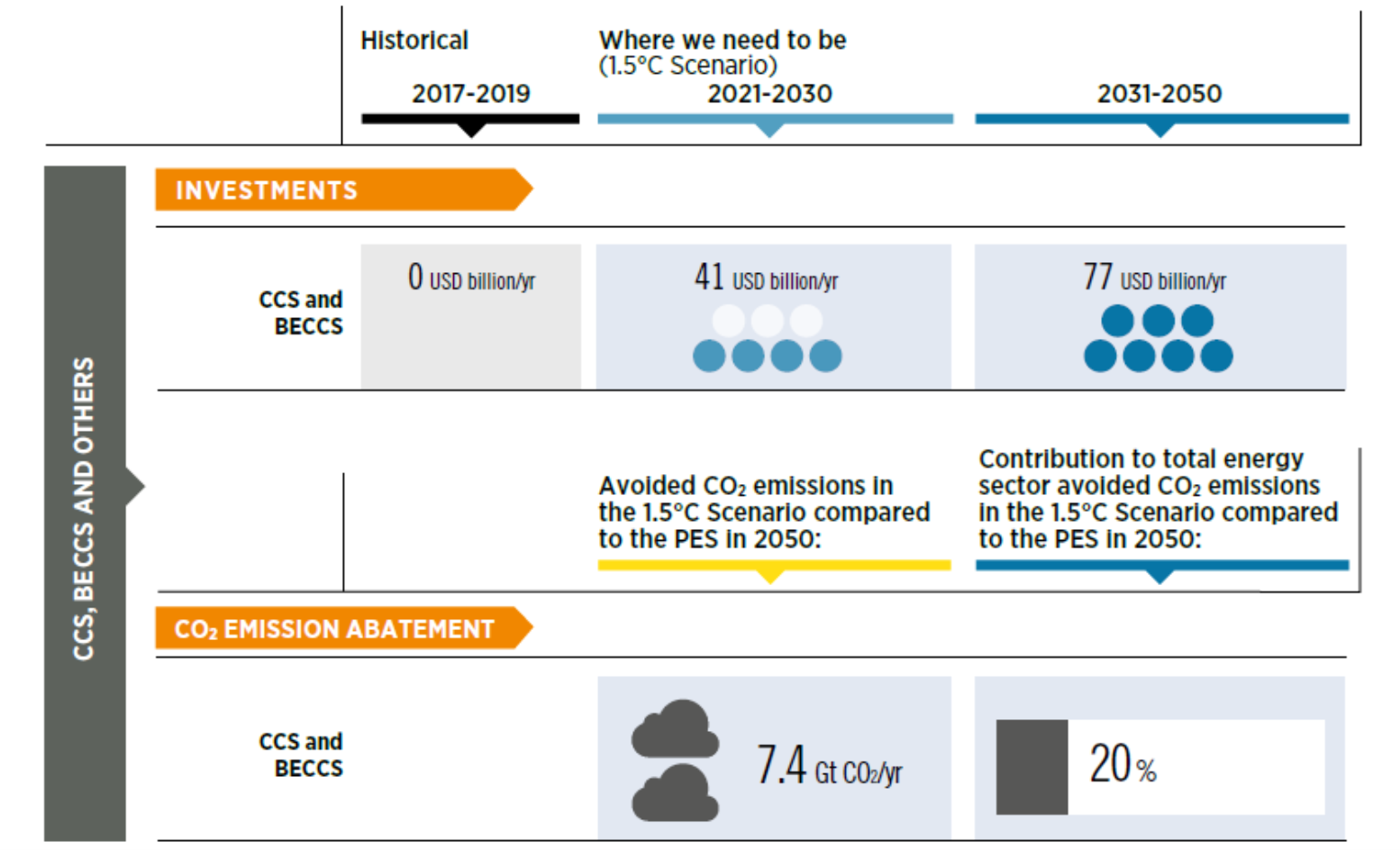While renewables and energy and materials efficiency could make a significant contribution to industrial emission reductions, their joint potential is not enough to fully decarbonise the industrial sector. To reach net zero emissions, IRENA supports countries to define strategies where carbon capture and storage (CCS), carbon capture and utilisation (CCU) and carbon dioxide removal (CDR) may play a role.
- Reaching net-zero by 2050 would require around 6 gigatonnes per annum (Gtpa) of CO2 to be captured and stored by 2040 and over 8 Gtpa by 2050, from a current rate of 0.04 Gtpa.
- Carbon capture for fossil fuel and process emissions in industry must be aggressively scaled up to reach circa 3.4 Gtpa by 2050, comprising 2.4 Gtpa of CCS applied in the cement, chemical and steel sectors, and 1.1 Gtpa captured in the production of blue hydrogen from natural gas with CCS.
- Bioenergy with CCS (BECCS) is essential for the net-zero goal but needs to reach 4.5 Gtpa by 2050, with 3.3 Gtpa applied to power and heat, and 1.2 Gtpa applied to the cement and chemical and petrochemical sectors.
- Direct air capture with storage (DACCS) or utilisation (DACCU) will play a role but is only in the early stages of development, with a few current commercial plants capturing only a negligible amount of CO2. Further development and validation are needed before its potential can be properly evaluated.
- Progress in capturing carbon is well off the pace needed, in large part due to high costs and lack of regulatory certainty, long-term signals and economic incentives, rather than technology challenges.
- CO2 transport options are proven but the scale is currently limited, while cost estimates are uncertain and very context-dependent.
- Geological storage of CO2 has been carried out for many years without major issues, but the scale is small, with regional mismatches and the true costs uncertain.
- Utilisation has a role, but should be mainly limited to applications that do not lead to the later release of the CO2. In the short term, however, it can compensate for a lack of storage opportunities and allows the deployment of capture technologies to be scaled up.
- Processes that currently capture CO2 do not remove all CO2 and still result in some emissions that must be accounted for.






